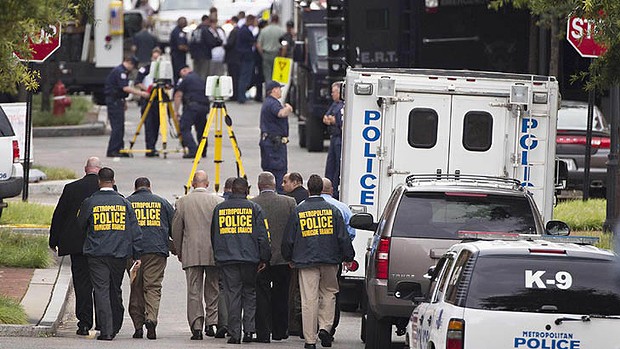 I was in Dallas giving a speech when news broke that Aaron Alexis had heard voices and appeared to have a mental illness. I was asked about the Navy Yard shooter during interviews with the local NPR affiliate at KERA radio and with the Dallas Morning News. While I always point out that persons with mental illnesses are more likely to be victims of violence rather than committing it, I took a different approach in both interviews.
I was in Dallas giving a speech when news broke that Aaron Alexis had heard voices and appeared to have a mental illness. I was asked about the Navy Yard shooter during interviews with the local NPR affiliate at KERA radio and with the Dallas Morning News. While I always point out that persons with mental illnesses are more likely to be victims of violence rather than committing it, I took a different approach in both interviews.
I said we need to acknowledge that some individuals are dangerous but what keeps most of them from acting out is that they get meaningful treatment. I hoped to tie the need for treatment to these horrific and reoccurring tragedies.
Fortunately, NPR’s Krys Boyd and the Dallas News’ Christina Rosales didn’t sensationalize my remarks as they easily could have.
Search Results for: violence
Treatment Is Our Best Hope For Stopping Senseless Violence
NAMI’s Official Stand on Guns, Violence and Mental Illness
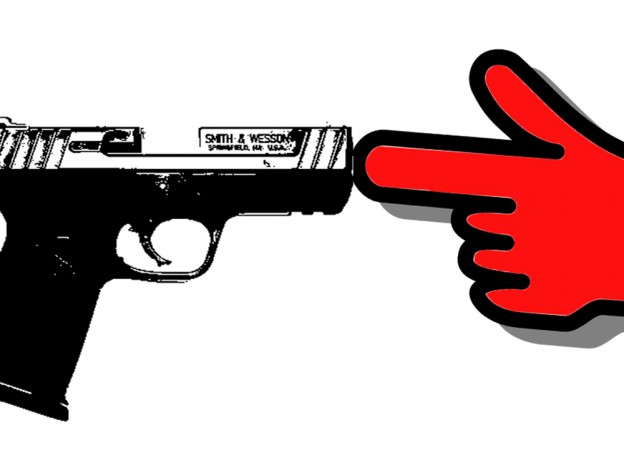
The National Alliance on Mental Illness has released a statement about Guns, Mental Illness and Violence. Give my recent blog posts about NAMI and its official policies, I wanted to share this policy statement with you.
Guns, Mental Illness and Violence — an Official Statement
NAMI’s public policy platform recognizes that most acts of violence or dangerous acts by people affected by mental illness are the result of mental health systems’ treatment failures. Public policies and programs that provide access to early diagnosis, crisis intervention, appropriate treatment and support, including integrated treatment when there is co-occurring substance abuse, must be available and accessible. In addition, family support and education must be available and promoted.
He’s Being Held Twice As Long In Prison As Someone Without A Mental Illness. Now Virginia Correctional Officials Are Ignoring A Prison Video Showing He Didn’t Attack Guards
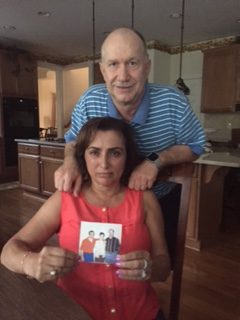
Sana and James are seeking help for their son, Christopher, who has paranoid sczhophrenia. He’s served twice as long in a Virginia prison as the state recommends for someone convicted of identical crimes.
(7-24-23) I’ve heard stories about individuals with serious mental illnesses being trapped and mistreated in our criminal justice system. The case of Christopher Sharikas is among the most egregious, by far.
Sharikas, who has been diagnosed with paranoid schizophrenia, has been imprisoned in Virginia for 26 years after being convicted of felonies that carried a state recommended maximum sentence of eleven years. Based on state guidelines, that’s more than twice as long as someone without a mental illness would serve.
But there is more to this injustice – information that I only recently learned that is simply outrageous.
When Sharikas appeared before the Virginia Parole Board in December 2020, he was denied release after the Virginia Department of Corrections said Sharikas had assaulted prison guards nine years earlier. What the parole board was NOT told is that a video of that alleged incident exonerated Sharikas. It proved that he had not attacked officers.
When challenged about this irrefutable evidence, a Department of Corrections official told Sharikas and his family that video evidence didn’t matter. Guards at the prison had sworn that he’d attacked them. That was sufficient for the department. Put simply, it backed its officers regardless of contrary evidence.
I first wrote about Sharikas on this blog in 2017. I followed up with editorials in The Washington Post and USA Today. The Post published a prominent story about Sharikas. Yet, no state agency, elected official or mental health advocate has stepped forward to help Sharikas. The only mental health organization that has offered assistance is the Treatment Advocacy Center.
This is shameful.
CIT Training For First Responders Comes Under Fire: Is That Criticism Fair?
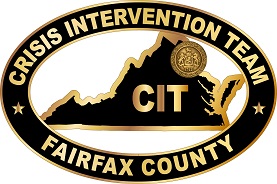
(5-22-23) I recently was sent this story about Crisis Intervention Team training, which aired a while ago on National Public Radio.
Because I support CIT training and know of incidents where CIT trained officers have saved lives, I was a bit concerned about the headline.
The problem is in implementation, choosing empathic officers and community support services. Ron Bruno, who I served with on a federal panel that advises Congress, makes key points defending CIT.
Still, every time a parent or other loved one calls the police, there is a risk. Here in Fairfax County, Va., CIT trained officers shot and killed Jasper Aaron Lynch, 26, after his parents sought help. It is difficult looking at the body camera images to understand why. Meanwhile, incidents where CIT officers helped someone in crisis go unreported.
What is the status of CIT in your community? What are your thoughts about ways to improve CIT and police interactions with individuals with mental illnesses? Please share your thoughts on my facebook page.
Mental Health And Police Violence: How Crisis Intervention Teams Are Failing
All Things Considered National Public Radio
Nationwide protests over police accountability and racial justice have reenergized longstanding efforts to fundamentally change how police departments respond to someone in a mental health emergency. Many are calling for removing or dramatically reducing law enforcement’s role in responding to those crisis calls unless absolutely necessary.
Since 2015, nearly a quarter of all people killed by police officers in America have had a known mental illness. Injuries, too, are common although they are less carefully tracked. There’s anecdotal evidence that botched encounters between police and people in a mental crisis are up during the pandemic.
Would Jordan Neely Be Alive If New York City Had A Care Court? “Coercive Compassion.”
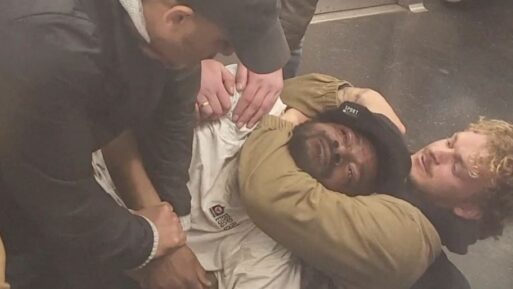
(5-9-23) Would Jordan Neely, a homeless, African American New Yorker with a history of mental illness, who was strangled to death in a subway car by a Marine Corps veteran, be alive today if New York had a so-called Care Court?
Care Courts are California’s latest attempt to reduce homeless, especially among those with mental illnesses, such as Neely. The destitute young street entertainer had been arrested more than 40 times, according to news reports, and was well-known to social workers. CNN reported that he was “on a list of homeless people identified as having dire needs.”
California officials describe Care Courts as “coercive compassion” an initiative that will involuntarily place people into treatment – if they meet certain criteria – rather than waiting for them to pose a danger to themselves or others.
Care Courts will allow a relative, mental health clinician, police officer and others to file a petition in the new civil court system to have the person, willing or not, enter the program. A clinician then will have two weeks to decide if the person, who is afforded legal counsel, qualifies for the program, which will accept those with mental health illnesses such as schizophrenia or other forms of psychosis. Care Court will also be an option if a person is involved in a criminal or civil court case and is determined to be unfit to stand trial.
The National Alliance on Mental Illness and others including: California’s Big City Mayors, California Professional Firefighters, the California Medical Association, and the California Hospital Association support creation of Care Courts.
Obviously, creating a Care Court has outraged disability and civil rights groups, including the state’s Protection and Advocacy organization, while it is being embraced by many parents and others who are frustrated by a neglectful system that allows their loved ones to resist treatment and “die with their rights on.”
Blood On The Razor Wire: An Excellent Prison Memoir By A Convict Who Beat The Odds
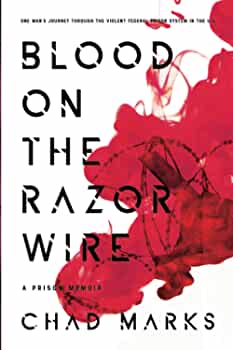
This post is about a prison memoir, BLOOD ON THE RAZOR WIRE, not mental illness.
(5-8-23) Chad Marks turned his life around by sheer determination and guts.
Raised by a single mother on welfare in a poor Rochester neighborhood, he started selling cocaine when he was thirteen years old. Three years later, he was selling crack cocaine and when he was 24 years-old, he was sentenced to a 40-year federal mandatory minimum sentence – ten years for a crack cocaine drug conspiracy, five years for possessing a weapon, and another 25 years for possession of a .22 rifle.
Society was happy to rid itself of him. And it did.
Marks was sent to “Big Sandy,” a federal maximum security prison located in a remote area of Kentucky. It was one of the most violent penitentiaries operated by the federal government, with stabbings, beatings and murders.
Chad Marks was not prepared for what he was being thrown into as a young man facing four decades behind bars.
“For me there was a choice I had to make,” he later would write in an article for Families Against Mandatory Minimums. “I could give up, and in doing so take a road of negativity, or I could choose a much different path. I saw then that all paths in life, for good or bad, begin with one small step. For so long in my life, I chose the wrong path. At that very moment, I knew I had to change my direction, because when we choose our path we choose our destination.”


